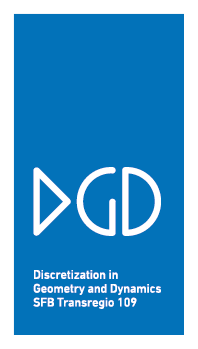Generalisation of the Pythagoras Theorem
Media
Description
"Say it to me, and I will forget it. Show it to me, and I might remember. Let me do it, and I will be able to do it." This quote, attributed to Confucius, explains in a few words the idea and purpose behind openly-designed visualisations. In teaching, an activity-orientated learning process helps the pupil or student to remember the material taught. Furthermore, animated visualisations can often convey processes clearly, which are otherwise difficult to explain solely through language.
The animation shows a fragmentation proof for an interesting generalisation of the Pythagoras Theorem: not only the sum of the squares over the short sides of a right-angled triangle is equal to the square on the hypotenuse. Much more, this theorem is valid for any random similar figures on the short sides of the triangle. In particular, this is valid for regular geometric forms. The animation shows a direct fragmentation proof of this fact. If one fragmentises any geometric form on the short sides of a triangle in a suitable manner, then the fragments can be seamlessly fitted into the hypotenuse. By moving the slider, the fragmentation process can be demonstrated using different geometric forms.






